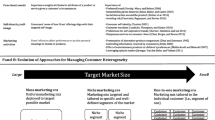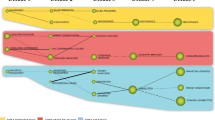Abstract
The amount of data from which organizational and consumer insights can be drawn is vast and increasing. Yet, the type of data that is becoming more rampant, for example, from social media, is changing to include text, images, and video. Consequently, new methods and techniques for analysis are emerging and producing fruitful insights. Yet, marketing practitioners and researchers still focus on traditional analyses from experimental or survey techniques. This paper breaks down content analysis into its theoretical underpinnings in order to shed light on its foundation as it pertains to marketing theory and practice. We draw upon Hart’s theory of word choice and verbal tone to show how content analysis can be used in a variety of marketing research and strategy phenomena, both at the individual and organizational levels. Aligning with Hart’s dimensions and calculated variables, which make up the theoretical foundation of DICTION, we present a number of applicable areas in marketing where content analysis can provide exceptional results. The theoretical framework proposed in this paper underscores the potential for content analysis as a viable marketing research and strategy tool for organizations.
You have full access to this open access chapter, Download conference paper PDF
Similar content being viewed by others
Keywords
These keywords were added by machine and not by the authors. This process is experimental and the keywords may be updated as the learning algorithm improves.
The amount of data from which organizational and consumer insights can be drawn is vast and increasing. Yet, the type of data that is becoming more rampant, for example, from social media, is changing to include text, images, and video. Consequently, new methods and techniques for analysis are emerging and producing fruitful insights. Yet, marketing practitioners and researchers still focus on traditional analyses from experimental or survey techniques. This paper breaks down content analysis into its theoretical underpinnings in order to shed light on its foundation as it pertains to marketing theory and practice. We draw upon Hart’s theory of word choice and verbal tone to show how content analysis can be used in a variety of marketing research and strategy phenomena, both at the individual and organizational levels. Aligning with Hart’s dimensions and calculated variables, which make up the theoretical foundation of DICTION, we present a number of applicable areas in marketing where content analysis can provide exceptional results. The theoretical framework proposed in this paper underscores the potential for content analysis as a viable marketing research and strategy tool for organizations.
Author information
Authors and Affiliations
Corresponding author
Editor information
Editors and Affiliations
Rights and permissions
Copyright information
© 2018 Springer International Publishing AG
About this paper
Cite this paper
Treen, E., Pitt, C. (2018). Content Analysis in Marketing Strategy: Applications of Hart’s Theory of Word Choice and Verbal Tone: An Abstract. In: Rossi, P., Krey, N. (eds) Marketing Transformation: Marketing Practice in an Ever Changing World. AMSWMC 2017. Developments in Marketing Science: Proceedings of the Academy of Marketing Science. Springer, Cham. https://doi.org/10.1007/978-3-319-68750-6_9
Download citation
DOI: https://doi.org/10.1007/978-3-319-68750-6_9
Published:
Publisher Name: Springer, Cham
Print ISBN: 978-3-319-68749-0
Online ISBN: 978-3-319-68750-6
eBook Packages: Business and ManagementBusiness and Management (R0)




